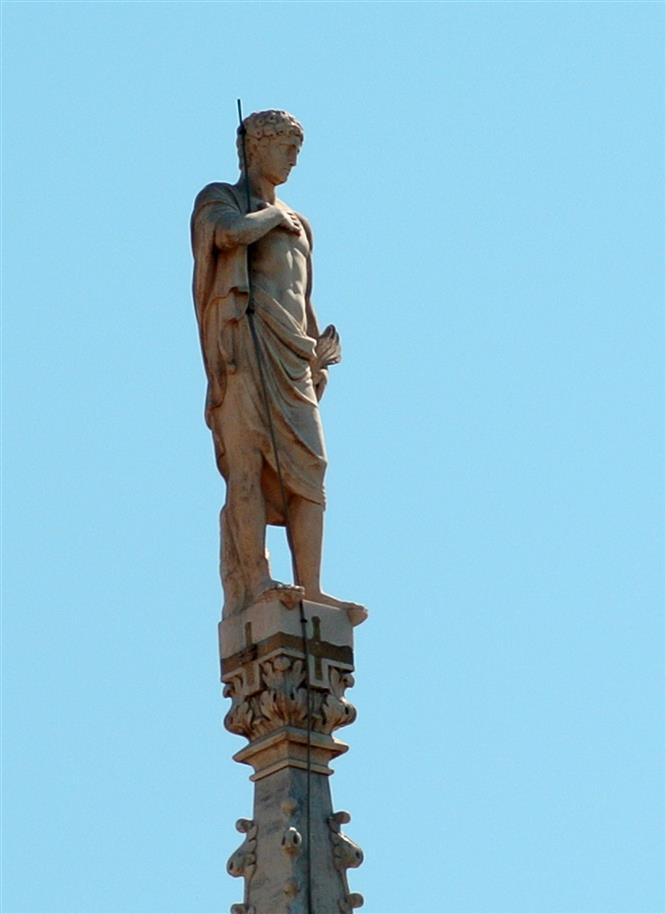The spire is located close to the central terrace, towards the façade, on the North side. It is topped by the statue of a Saint with his right hand on his chest. He has a youthful face and short curly hair. He is wearing a tunic that covers his right shoulder and is tied around his waist. With his left hand he supports part of the drapes and holds the palm of martyrdom in his hands, the symbolism of which is ancient. In Christian iconography, the palm, a typical plant in the East where it is most common, is a symbol of martyrdom because it was believed that the plant died when it produced its fruit, thus sacrificing itself. The symbol of sacrifice for the birth of new fruit is interpreted as a victory of rebirth and therefore as immortality. The day known as Palm Sunday recalls Jesus Christ’s triumphal entry to Jerusalem, which is therefore a prefiguration of Resurrection after death. The palm also has a similar value as a symbol of resurrection for the saints that display it as an attribute, thus being classified as martyrs. The statue can be dated to the first half of the 19th century, and presents neoclassical plastic characteristics of anatomically proportioned and academically detailed bodies. The pose is one of great serenity. Clearly inspired by a classical model, the striving to achieve perfection in the forms aspires to inner spirituality. The desire for ethical renewal expressed by neoclassical art made it possible to discover models of austerity and rationality in the art of classical Greek and Roman antiquity. The greatest Italian exponent of this profound rebirth of sculpture was Antonio Canova, who revived the concept of ideal beauty impressed in marble.
SAINT AND MARTYR





 Tiburio
Tiburio

